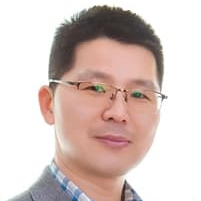Marine Microalgal Functional Foods
A special issue of Marine Drugs (ISSN 1660-3397).
Deadline for manuscript submissions: closed (28 February 2023) | Viewed by 12605
Special Issue Editors
Interests: microalgal biotechnology; functional foods; marine biotechnology; natural products; food and nutrition
Interests: food safety control; natural product chemistry; food functionality
Special Issue Information
Dear Colleagues,
Microalgae, especially marine microalgae, are rich resources of bioactive compounds and functional foods, many of which are of high value. However, the applications in these areas are still limited because of the poor understanding of microalgal characteristics, mass cultivation technologies, and the bioactivities and functionalities of microalgal products. In this issue, we will focus on the development of marine microalgal functional foods. Experts in this interdisciplinary area of microalgal research and applications will be invited to contribute results of recent advances of their research. I am sure that this effort will lead to significant progress in this highly promising research area.
Prof. Dr. Feng Chen
Prof. Dr. Ka-Wing Cheng
Dr. Jin Liu
Guest Editors
Manuscript Submission Information
Manuscripts should be submitted online at www.mdpi.com by registering and logging in to this website. Once you are registered, click here to go to the submission form. Manuscripts can be submitted until the deadline. All submissions that pass pre-check are peer-reviewed. Accepted papers will be published continuously in the journal (as soon as accepted) and will be listed together on the special issue website. Research articles, review articles as well as short communications are invited. For planned papers, a title and short abstract (about 100 words) can be sent to the Editorial Office for announcement on this website.
Submitted manuscripts should not have been published previously, nor be under consideration for publication elsewhere (except conference proceedings papers). All manuscripts are thoroughly refereed through a single-blind peer-review process. A guide for authors and other relevant information for submission of manuscripts is available on the Instructions for Authors page. Marine Drugs is an international peer-reviewed open access monthly journal published by MDPI.
Please visit the Instructions for Authors page before submitting a manuscript. The Article Processing Charge (APC) for publication in this open access journal is 2900 CHF (Swiss Francs). Submitted papers should be well formatted and use good English. Authors may use MDPI's English editing service prior to publication or during author revisions.
Keywords
- microalgae
- marine microalgae
- bioactivity
- functional foods
- biotechnology
- microalgal cultivation
- food nutrition
- food safety
- nutrition of microalgal products
- nutraceuticals








